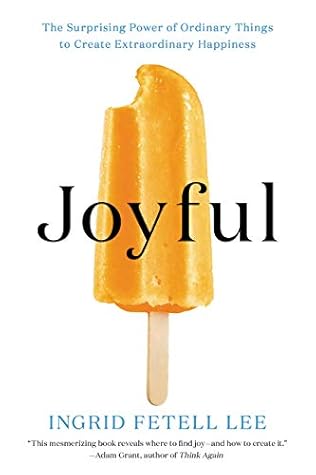More on this book
Community
Kindle Notes & Highlights
Read between
March 24 - April 7, 2019
A body of research is emerging that demonstrates a clear link between our surroundings and our mental health.
liveliest places and objects all have one thing in common: bright, vivid color.
She described an apron in a way I’d never heard before: “It’s like your little cape,” she said, evoking superhero associations.
Hospital patients assigned to sunnier rooms were discharged sooner and required less pain medication than those in rooms with less light.
That’s because abundance isn’t about just accumulating things. It’s about surrounding yourself with a rich palette of textures that enliven your senses.
Access to nature has been shown to improve sleep quality, decrease blood pressure, and even lengthen lifespan.
people living in greener areas have a lower incidence of anxiety and depression and display an ability to recover more quickly from stressful life events than those in less green areas.
No matter how domesticated we have become, we all have a wild soul that beats and breathes under layers of clothing and responsibility. The question is, how do we let it out?
Mise en place, which is French for “putting in its place,” is a similar practice used in professional kitchens to set up for a shift by neatly laying out all ingredients and tools that will be needed.
Play is one of our greatest means of accessing delight, with deep roots in human life.
“The opposite of play is not work,” he often says. “It’s depression.”
while daydreaming may hinder our ability to complete tasks in the moment, it can help us devise novel ideas and think through issues with long-term, rather than immediate, ramifications.
the experience many people have in moments of awe: the feeling of being “small or insignificant.” Keltner calls this phenomenon the small self, and while it may sound unpleasant, in fact for most people it comes with a euphoric feeling of resonance and oneness with other beings. People in this state often say that they feel the presence of a higher power and that day-to-day concerns recede from their attention.
People who regularly celebrate positive events with others are happier than those who keep their good news to themselves; and couples who celebrate each other’s good news are happier in their relationships.
As Mark Twain put it, “Grief takes care of itself; but to get the full value of a joy you must have someone to divide it with.”
The blossoming of the trees, the rising of the sun, the flow of the tides: these recurring events remind us of time’s circular nature and create an underlying cadence of joy that we can rely on.
Here’s Winnie the Pooh’s response in The House at Pooh Corner when Christopher Robin asks him about his favorite things to do: “Well,” said Pooh, “what I like best—,” and then he had to stop and think. Because although Eating Honey was a very good thing to do, there was a moment just before you began to eat it which was better than when you were, but he didn’t know what it was called.
Sensitive Pooh intuits what scientists are just now discovering. Studies have found that a period of anticipation can significantly enhance the joy that we find in an experience. Researchers believe that this may be because we create detailed mental simulations of future events, so imagining a future joy fills our minds with rich sensations and exciting possibilities.
The problem is that without joy, we may be surviving, but we are not thriving. If we rarely laugh or play, if we never have glimpses of magic or flashes of transcendence or bursts of celebration, then no matter how well fed and comfortable we are, we are not truly alive.


